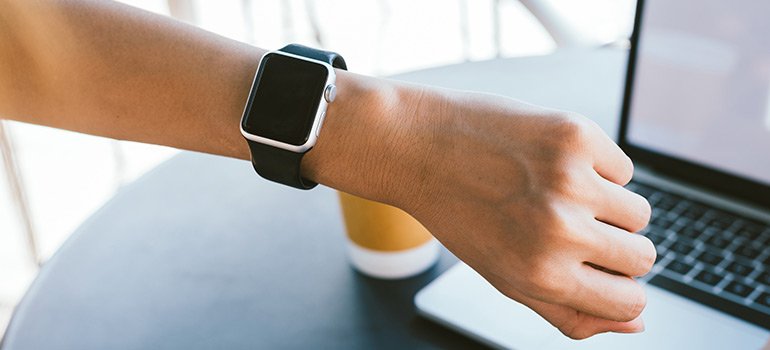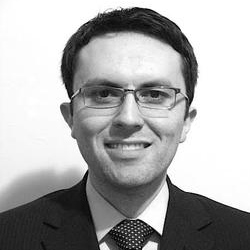Beginning with the return of Steve Jobs in 1997, Apple began its comeback with the introduction of new products. Some of its most successful Apple products have been in the “i” line, including the iMac, iPod, iPad, iPhone, and iTunes. When it introduced the Apple Watch, many consumers wondered why it was not called the iWatch, as that would have been consistent with its other product names. In an interview with David Rubenstein on Bloomberg, Apple’s CEO Tim Cook was asked why the Apple Watch was not named the iWatch. Cook just casually states he preferred the name, however, we know that isn’t true – trademark issues prevented Apple from using the name iWatch, due to IP challenges across the globe including the U.S., European Union, Switzerland, and China.

iHistory
After Steve Jobs returned to Apple in 1997, he worked to rebuild the struggling company. One of the key turning points was the release of the iMac in 1998, which, along with Jobs’ leadership, saved the company. The iMac set the tone for Apple’s long history of using the “i” prefix for its most iconic devices.
Apple launched the iPod in 2001, revolutionizing how people consumed music with this portable music player. This was followed by the iPhone in 2007 and the iPad in 2010, creating a seamless Apple ecosystem for users. These Apple products solidified the brand as a global technology leader. Despite the success of these product categories, the Apple Watch broke away from the traditional naming convention, largely due to legal obstacles tied to the iWatch trademark.
When Apple decided to create its first smartwatch, it faced significant trademark challenges. The name iWatch had already been registered by several companies across the globe, meaning Apple was unable to secure the iWatch trademark. This issue illustrates the complexity of intellectual property in a global market.
Enter OMG Electronics
OMG Electronics, a California-based company, played a crucial role in Apple’s decision to call its smartwatch the Apple Watch instead of the iWatch. In 2012, OMG Electronics applied for the iWatch trademark with the intent of creating a wearable device that combined mobile functionality with watch features. Despite raising only $1,434 through a crowdfunding campaign between September to October, OMG Electronics managed to register the name before Apple could.
Additionally, in 2007, another U.S. company attempted to trademark iWatch, but its efforts were successfully opposed by the Swiss watchmaker Swatch, citing its own iSwatch trademark. This legal precedent foreshadowed future hurdles Apple would face.
Beyond the U.S.
Apple encountered even greater difficulties outside the U.S., particularly in the European Union, where Probendi Limited, a company based in Dublin, Ireland, held the iWatch trademark since 2008. Probendi openly declared that it was the only entity legally permitted to use the name iWatch in the EU.
In China, nine companies had already registered variations of the iWatch trademark, and one company even trademarked iWatching, adding further complications. Although Apple was able to secure the iWatch trademark in several countries, including Mexico, Japan, Taiwan, and Russia, it was unable to secure its trademarks in other key markets. These challenges made it impractical for Apple to use the name iWatch, leading to Apple’s decision to market the Apple Watch instead.
Luckily they have the trademark for “Apple” relating to their products, which has become such a huge name that it makes it easy to name future products with their brand name if they’re not able to secure the trademark for their chosen name. A similar thing happened when Apple launched their streaming device in 2006 that was originally launched as the iTV, however an unsuccessful trademark battle with a British broadcasting company with the same name meant they had to revert to their trusted “Apple” trademark instead and call the product “Apple TV”.
iSwatch vs. iWatch
In the UK, Apple filed for a trademark for iWatch, but the application faced immediate opposition from Swatch. The Swiss watchmaker Swatch argued that the iWatch trademark was too similar to its iSwatch and Swatch products. Swatch’s objection was based on the claim that allowing Apple to register the iWatch name would cause confusion among consumers.
The Intellectual Property Office (IPO) of the UK sided with Swatch, ruling that the iWatch trademark shared similarities with computer hardware, wearable technology, and traditional watches. However, Apple later appealed this decision. Apple was successful in convincing the High Court that the products were distinct, but it was already too late to use the name iWatch for its smartwatch.
Trademark Battles Continue
Apple’s legal battles with Swatch did not end there. In 2017, Apple challenged Swatch’s use of the slogan “Tick Different”, which Apple argued was derived from its famous “Think Different” campaign. However, the Swiss Federal Administrative Court ruled in favor of Swatch, stating that most Swiss consumers were not familiar with Apple’s old slogan, and there was no substantial evidence of consumer confusion.
Importance of Trademarks in Global Markets
Trademarks play a critical role in protecting a company’s brand and preventing other entities from using similar products or names. As shown by Apple’s difficulty in securing the iWatch trademark, filing early and conducting extensive research into existing registered trademarks is vital. Companies must ensure their product names are unique within the relevant product categories and regions.
Related: Check out our list of the things you need to know before you file a trademark
Apple’s inability to use the name iWatch was not just about trademarks; it highlighted broader challenges companies face in protecting their intellectual property globally. For example, Apple had to pay significant amounts to other companies in some regions for trademarks they wished to acquire, such as during their earlier disputes with Cisco over the iPhone name.
Despite these challenges, Apple’s choice to call the watch the Apple Watch instead of the iWatch became a branding success, allowing it to integrate seamlessly with the Apple ecosystem and differentiate itself in the growing market for wearable technology.
For more insights on filing for a trademark, check out our guide on things you need to know before you file a trademark.

